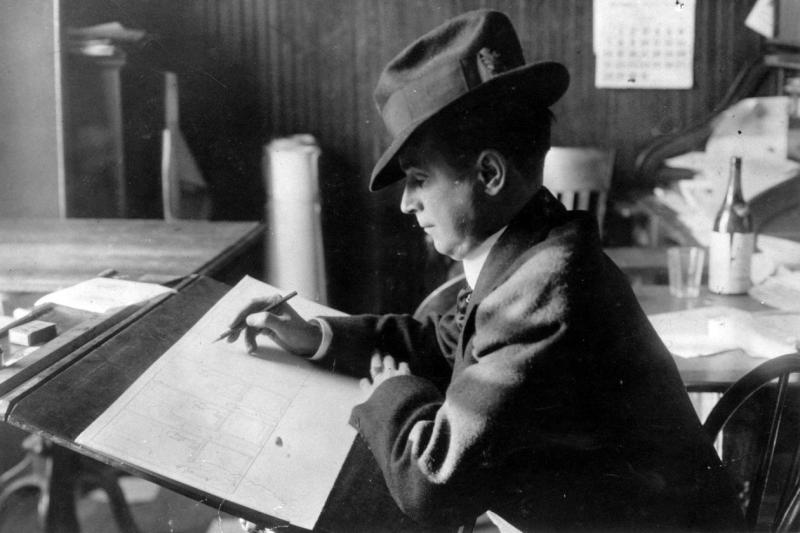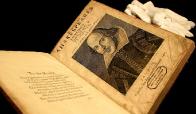'Wild Minds' Review: Animation's Golden Age
By: John Canemaker (WSJ)



Five years ago, Reid Mitenbuler penned "Bourbon Empire," about the business of liquor. It's only fitting that his new book is on animation history, since both subjects are the stuff that dreams and nightmares are made of. In the toon industry's past, distilled spirits frequently stimulated anthropomorphic conjuring.
"Wild Minds: The Artists and Rivalries That Inspired the Golden Age of Animation" is a colorful chronology of the first 50 years of American animated film. Juicy tales abound about the films and the wildly imaginative people who made them. Mr. Mitenbuler tells their stories with relish and clarity.
His underlying purpose is serious: recalling a time, from the turn of the 20th century to the 1950s, when most mainstream animated films were not made primarily for children. Today, the majority of TV and feature animation is ghettoized as kiddie fare. Back then, toon films were geared to adults, lobbing what Mr. Mitenbuler describes as "little hand grenades of social and political satire: bawdy yet clever, thoughtful even if they were rude."
Early animation was a freewheeling era when "wild minds" pioneered creative possibilities. A time when Betty Boop offered flashes of nudity, Popeye's yarns held "sly messages about the injustices of unchecked capitalism" and star critters such as Bugs Bunny and Daffy Duck made fun of current events, mores, movies, even their studio bosses. A feature-length animated film became a classical-music concert; Donald Duck propaganda shorts urged folks to pay their taxes for the war effort and to be good neighbors to South America. "During its first half-century," notes Mr. Mitenbuler, "animation was an important part of culture wars about free speech, censorship, the appropriate boundaries of humor, and the influence of art and media on society."
Three catalysts, starting in the late 1940s, forever altered animated cartoons: U.S. antitrust decisions dynamiting movie-studio distribution, television's rise, and demographic changes following the postwar baby boom. Parents realized that their TV sets could function as babysitters; advertisers realized that those children "provided a way into their parents' pocketbooks." This led to the sanitizing of cartoons and the censoring of films meant for older audiences—the better to sell breakfast cereals.
Animation’s beginnings set the stage for all that was to come in terms of techniques, artistic purpose versus commercial interests, presentation, and content. Subject matter from that era presaged the subversive themes found in today’s “South Park,” “The Simpsons” and “Bojack Horseman.”
Mr. Mitenbuler recounts dramas tragic and comic, rivalries and competition, duplicity, schadenfreude, fame, obscurity, fortunes and reputations made and lost. Four of the earliest pioneers set the pattern. In 1897, James Stuart Blackton established the Vitagraph Studios (later bought by the brothers Warner), using the novelty of animation to attract audiences to his live-action productions. In 1906 his clumsy hand-drawn toons and, soon after, his stop-motion puppets amazed an international public, including Émile Cohl, a 51-year-old Parisian caricaturist. Inspired, Cohl began making the first of nearly 200 short animated films. “Fantasmagorie” (1908), with white figures on black, smoothly morphing continuously in an absurdist narrative, anticipated not only Tex Avery’s surreal inventiveness decades later at MGM, in such works as “Dumb-Hounded” (1943) and “Red Hot Riding Hood” (1943), but also UPA studio’s flat modern-art stylings with such characters as Mr. Magoo and Gerald McBoing-Boing—protests against Disney’s “illusion of life” aesthetic.
Technically, Cohl had a simplified style, developing basic methods and tools to accommodate the many sequential sketches needed to create movement. In “The Man in the Moon” (1909), he mixed animation and live-action. In 1912, he arrived in Fort Lee, N.J., to animate “The Newlyweds,” the first series with a recurring cast. Based on a comic strip by George McManus (better known for “Bringing Up Father”), “Newlyweds” firmly associated “animated cartoons” (the first use of that term) with comic strips in the public’s mind and drew interest in the new medium from other cartoonists.
Cohl, however, worked anonymously—McManus got all the credit. When Cohl returned to France two years later, bad luck followed: A laboratory fire destroyed his American work. He made a few more films to little notice, and often bitterly denounced Americans who claimed to have invented animation. He died in 1938 in obscurity and poverty.
Winsor McCay often declared himself “the first man in the world to make animated cartoons,” though he had seen Blackton’s and Cohl’s films. Perhaps, writes Mr. Mitenbuler, “he just meant he was the first to do it his way.” McCay was a complete contrast to Cohl: internationally famous, a great and popular newspaper comic-strip pioneer and vaudevillian. His first animation, “Little Nemo” (1911), was based on his lavishly beautiful Sunday strip “Little Nemo in Slumberland.”
McCay’s masterly draftsmanship allowed him to transfer to the screen his “Nemo” characters with no change in linear detail. He also brought a feeling of weight to their smooth, naturalistic movements. Most important, he gave his characters distinctive personalities, especially in his third film, “Gertie the Dinosaur” (1914), which inspired many young artists to become animators. Walt Disney, who said in 1927 he wanted his cartoon characters to “be somebody,” developed McCay’s personality animation to its highest emotional believability, making audiences weep as well as laugh.
McCay and Cohl are both revered by today’s cartoon cognoscenti, though they remain unknown to the general public. These independent artists never started a studio, but openly shared their passion and innovative techniques in the new art of animation.
John Randolph Bray craftily patented and copyrighted those techniques, suing competitors for years to maintain his royalties. He created a studio capable of putting out many cartoon films efficiently, becoming the Henry Ford of animation. Soon an artisanal, single-artist form became a fiercely competitive studio system. It’s here that Mr. Mitenbuler’s wild stories start to flow like the floods of the sorcerer’s apprentice: Inspiring tales of inventors and the innovators of technical developments in sound, color and depth of field, as well as in hand-made, mechanical and photographic processes using tools called cels, rotoscopes, multiplane and stereoptical cameras.
Wild minds created cartoon flights of fancy, but all-too-human follies affected their filmmaking and personal lives: sibling rivalries, ruthless competitors, labor strikes, alcoholism, statutory rape, extramarital relationships, racism, sexism, the Hays Office, trust-busting, censorship, lawsuits, credit stealers, ad infinitum.
Mr. Mitenbuler’s deep research includes books, monographs and essays by animation historians. Admirably, nearly every quote is cited, so readers and scholars can source more detailed information. Still, there are minor editorial errors: Geppetto, from “Pinocchio,” is misidentified as Stromboli; Bela Lugosi was not the main model for the devil on Bald Mountain in “Fantasia.” Sometimes, Mr. Mitenbuler sells more sizzle than steak: There is no conclusive evidence that in the late 1920s the notorious porno-cartoon “Buried Treasure” was screened at a dinner honoring McCay. And the author repeats a persistent rumor, thoroughly analyzed and debunked by Didier Ghez in “Disney’s Grand Tour” (2013), that during his 1935 visit to Europe Walt Disney “got audiences with both Pope Pius XI and Benito Mussolini.” Still, these are small speed bumps on the journey of “Wild Minds” that do not detract from what is a breezy narrative ride in a toontown convertible.
—Mr. Canemaker is an Oscar and Emmy award-winning animation filmmaker, author of 12 books on animation history and head of the animation program at New York University’s Tisch School of the Arts.




